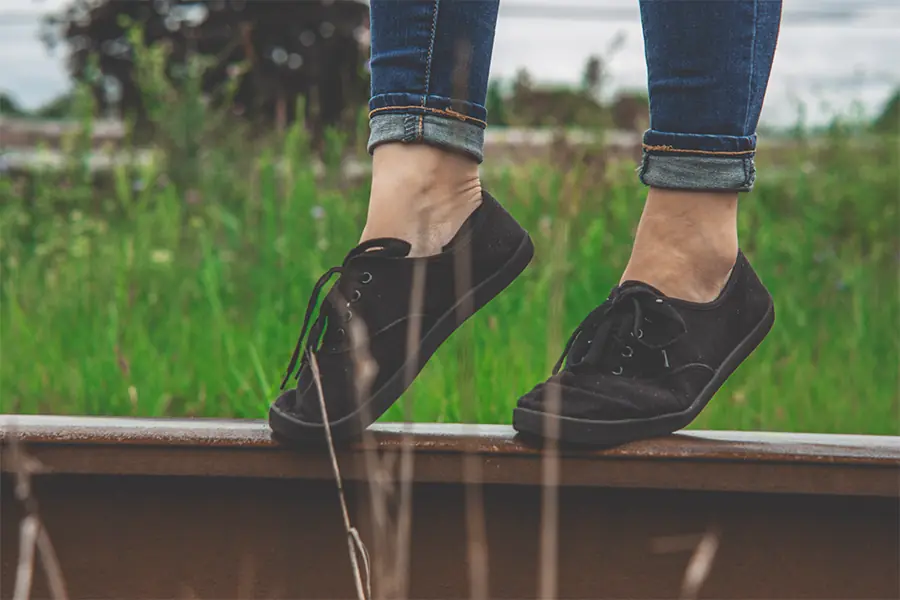Falling counts as one of the things we most fear as we get older. In fact, this fear, if we let it, can drastically shrink our activities and the breadth of our lives. Can balance be improved even in the elderly? Yes! Here’s the good news: simple and fun ways exist to keep us upright until the angels call us home. Remembering we are animals built on the principle of “use it or lose it,” getting our bodies tumble-proof begins with keeping our balance.
Deep inside our ears is a small organ called the labyrinth, part of the vestibular system, whose responsibility is both hearing and balance. Barring any underlying health issues, damage, infection, or dementia (all which can damage the labyrinth and/or parts of the brain and its delicate interchange), over time the signals the labyrinth sends to our hippocampus—the part of the brain in charge of memory, learning, and balance—become weaker and garbled. Then, our brain is unable to accurately send the correct message to the other parts of the body that we are about to reel out of control and take a fall.
The second piece in the anatomy of a fall comes from an underdeveloped core (trunk, spine, and erector) muscles and weakened feet. Without strong core, leg, and feet muscles, the labyrinth’s Mayday call to the brain may go unheeded; the body stays off-line because of a lack of equipment.
With a few simple exercises, we can shore up the communication lines to the hippocampus, and have toned muscles able to react in a flash to keep us from careening leftward into the hard edge of a table, or worse yet, an unforgiving cement sidewalk.
Good research has emerged giving us concrete suggestions to regain and strengthen our balance at any age. The research shows balance training prevents falls. Here are my top recommendations.
Go Barefoot as Much as Possible
Even now in cooler weather, purchase some rubber-bottomed socks and start padding around the house in them. The more time spent out of shoes the stronger your feet will become. Come spring, walking barefoot will be second nature.
Brush Your Teeth Balancing on One Foot
This is the easiest way to regain your balance. In the morning while brushing your teeth, raise your left foot off the ground. I like to simply bend one knee to a 90 degree angle from the floor, and lightly touch the counter with the tip of your non-brushing index finger. Raise your finger for as long as you can. Keep repeating.
In the evening: switch feet and hands! (Great for the brain, too). Before too long you will be able to brush all your pearly whites without touching the counter at all!
No-Hand Chair Rise
Practice getting out of a chair without using your hands.
Strengthen Your Core—Trunk, Spine, and Erector Muscles
Three exercises, done daily, will firm up these muscles in just a few weeks.
1. Opposite Arm/Leg Raise:
On the floor on all fours, stretch out the opposite arm and leg. Hold for six seconds and work up to 10 seconds. Switch arms and legs. Do six reps working up to ten reps.
2. Plank:
This is the classic yoga pose—palms and toes on the ground, keeping your body in a straight plank position. Hold as long as you can, work up to one minute (counting sixty seconds).
3. Reverse Crunches or Reverse Sit-Ups:
In the classic sit-up position, instead of bringing your head in your hands toward your knees. Raise your knees and bottom off the ground and bring them to your head, then only halfway back down before repeating. Do ten reps. Work up to two sets of twelve.
Dance!
Research from both Japan and the US shows that dancing counts as one of the best balance-enhancing things we can do. I tap dance once a week for seventy minutes. Ballroom dancing with a partner in your home, or out, when normal life resumes, is equally excellent. Science reveals the combination of dancing and music does wonders for your brain as well!
Isn’t it heartening to know we can change the course of our aging in such fundamental ways with just a few simple additions to our day?
Subscribe to Receive
Vibrant Aging™ Tips
Delivered Right to Your Inbox
&
Vibrant Aging™ Coach

L.J. Rohan is a Gerontologist (University of Southern California’s Davis School of Gerontology), Certified Aging in Place Specialist (CAPS), and Vibrant Aging™ Coach. L.J. is dedicated to redefining the aging process. With a focus on holistic well-being, she combines scientific research and practical insights to guide women age 55+ towards a vibrant, fulfilling life. Her work has been featured in numerous publications and she frequently speaks at institutions such as Yale University and Southern Methodis University. Be Vibrant!



One thought on “Keeping Steady on Our Feet”
Lisa, this was very helpful. I had a fall which resulted in a spiral fracture of my ankle. I’ve had 2 surgeries, and my biggest problem is balance.